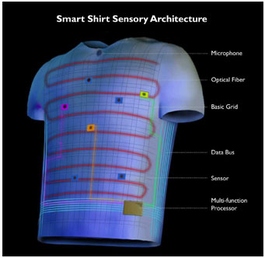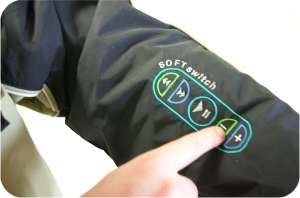Clothes generally lose their comfort after they have been worn for some time, The fabric seems to lose its sheen and the garment feels to be worn. There is also a limitation on clothes imposed by weather conditions. A single garment, that may feel comfortable on a cool breezy summer day, may feel inadequate to keep out the cold winds in winter.
However, thanks to an innovation by IBM, clothes may remain comfortable forever.
PATENTED TECHNOLOGY
According to a recent patent filed by IBM, the computer giant plans to foray into textiles and make use of fabrics woven using conductive threads. The conductive threads will be made of shape memory materials. Shape memory materials have the ability to return from a temporary shape to a permanent shape induced by an external stimulus trigger, such as temperature change. The temperature change may be induced by an electrical current.

Further, the fabrics will contain multiple sensors that will measure parameters both specific to the wearer (like body temperature, heart rate, salinity, even changes in voice, and gait) and external environmental factors (like temperature, humidity, precipitation, and wind). The sensors will, in turn, feed the data to a connected computing device that will analyze the received data points to determine a comfort score for the garment worn. The comfort score will be a numerical representation of how comfortable a garment is to the user based on the shape, texture, and the density of the threads of the garment. A configuration of the threads of the garment may be comfortable to the wearer in the summer, as the garment may allow the skin of the wearer to perspire and by transmitting moisture away from the body. However, the same configuration of threads may feel uncomfortable to the wearer in winters, as the garment may not protect the wearer from the cold. In this scenario, the sensors in the fabric will collect data from the wearer, such body temperature, body gait, and other similar factors that will indicate that the garment is not comfortable. Then, the computing device will change the configuration of threads until the computing device determines that the comfort score for the particular set of conditions is optimum and a comfortable configuration of threads is reached.
The computing device will also store values of data points received, and the optimum thread configuration for the data points in a repository. This way, the computing device will not have to compute an optimum thread configuration if the inputs received from the sensors is similar to a previously received set of inputs.

The wearer may also control the thread configuration through his smartphone, computer, tablet, or any other smart device connected to the computing device of the garment.
ADVANTAGES:
The advantages of this technology are obvious. People will need a limited set of such garments in their wardrobe as these garments last through all seasons. This is not only economical but also helps in conserving space. People will not have to store loads of clothes meant for all seasons. This technology will also aid the underprivileged. The underprivileged may only purchase or receive a small number of such garments, which will be enough to last them through all seasons. This technology also has application in sports clothing. Teams may not require a different set of sports jerseys for different weathers. Athletes will also feel comfortable in their clothes no matter the situation, which will undoubtedly improve their performance.
WHAT IS YOUR TAKE?
So, what do you think? How many more applications can you think of these type of clothes? How much time before these clothes become mainstream? Let us know in the comments below.
Publication number: US 20170357274
Patent Title: Garment Optimization
Publication date: 14 Dec 2017
Filing Date: 13 Jun 2016
Inventors: Aaron K. Baughman; Arun Joseph; Brian M. O’Connell; DiweshPandey;
Applicant: International Business Machines Corporation

